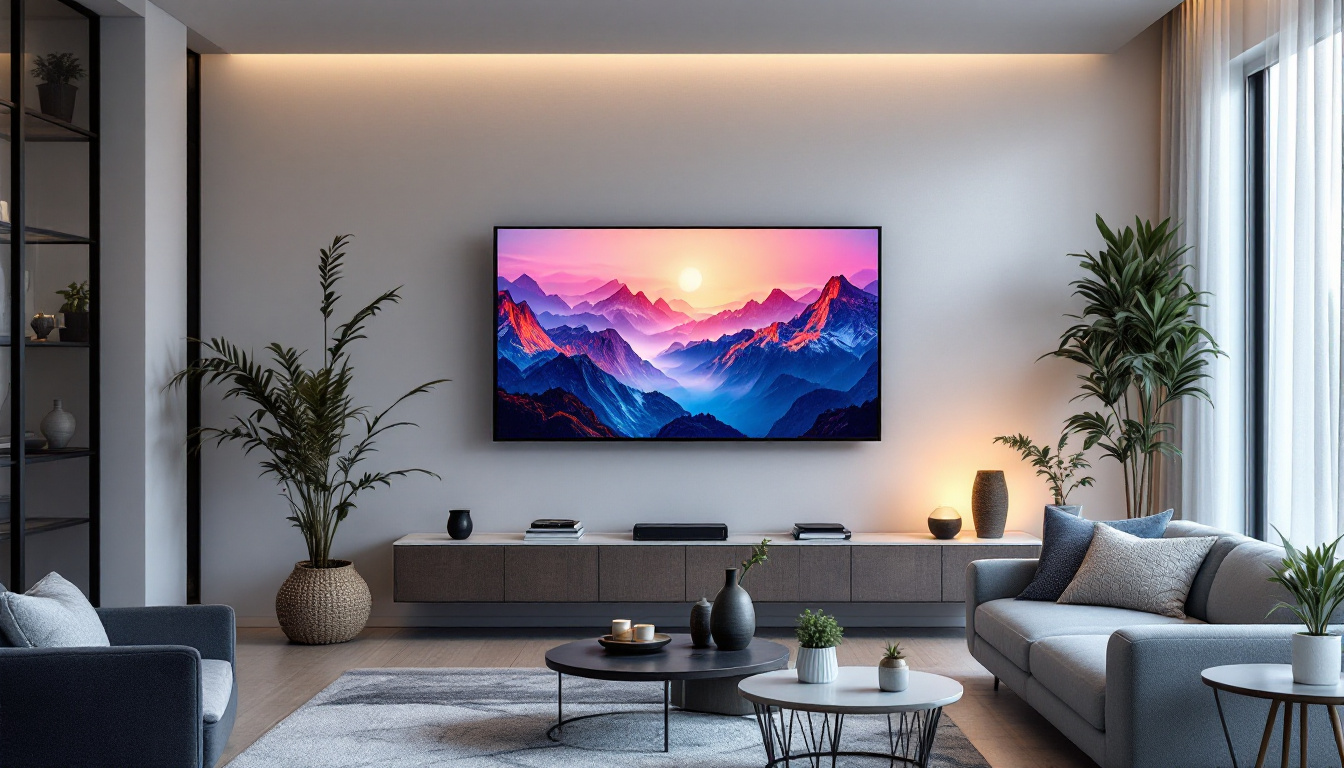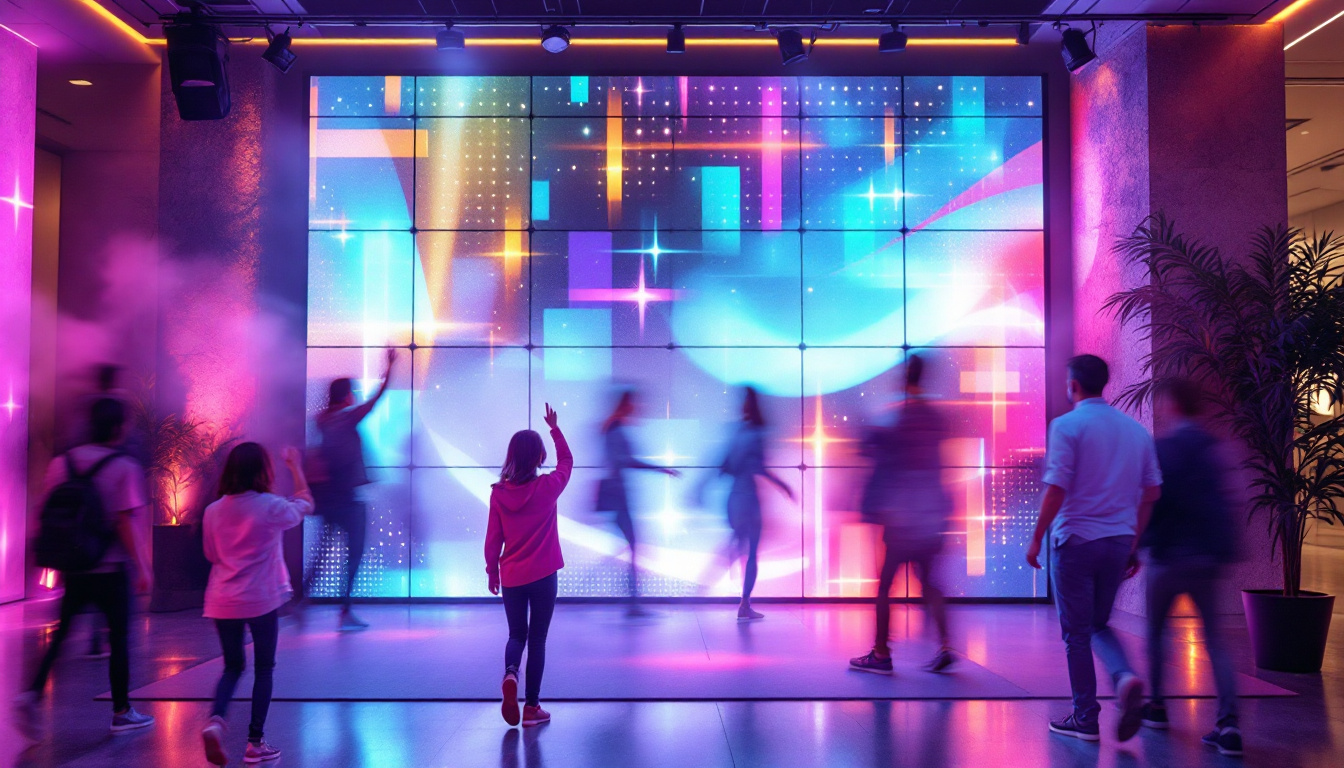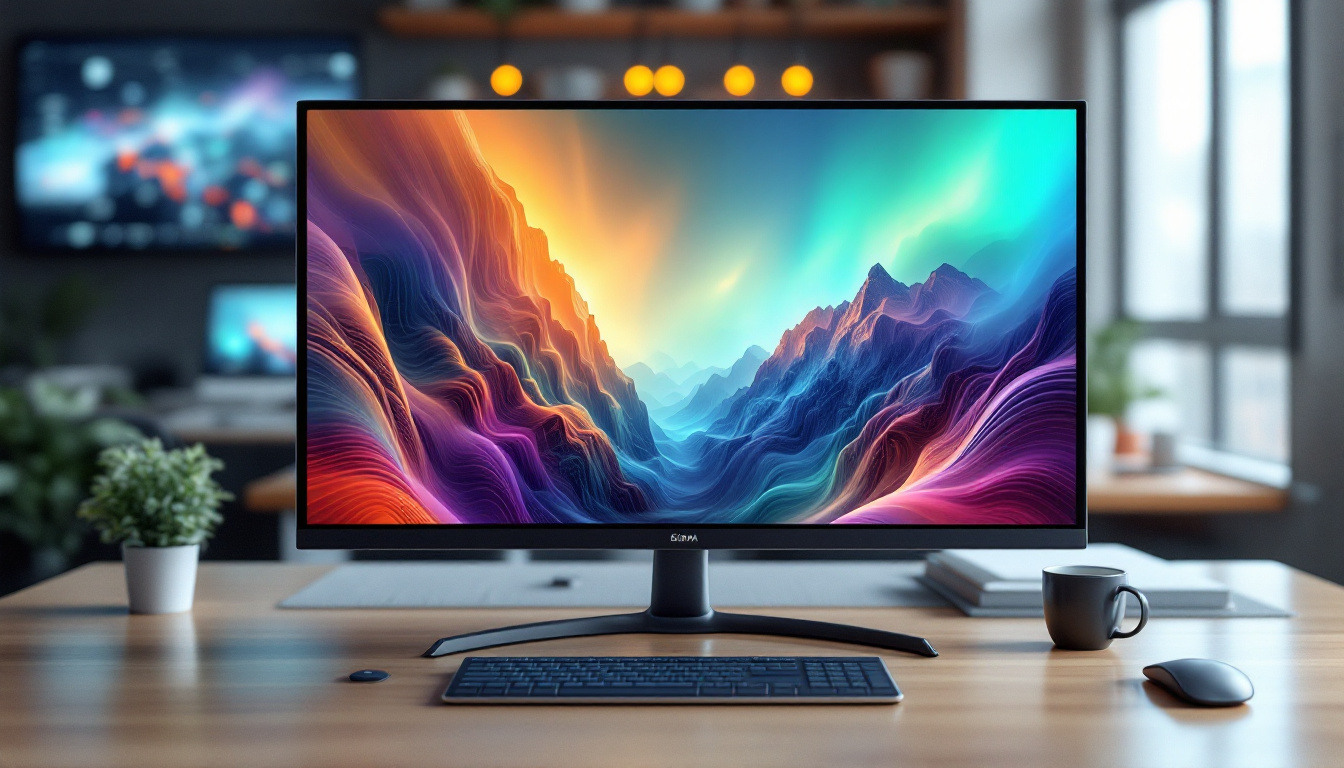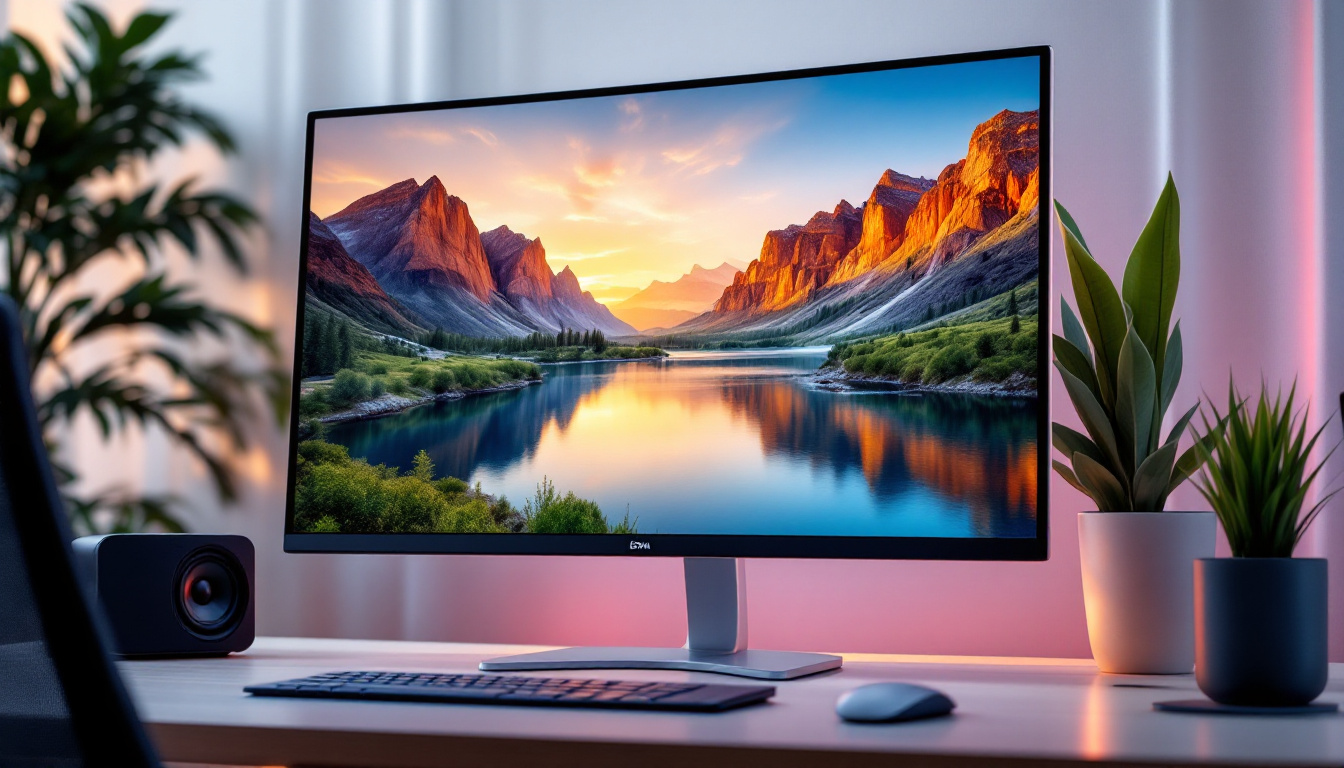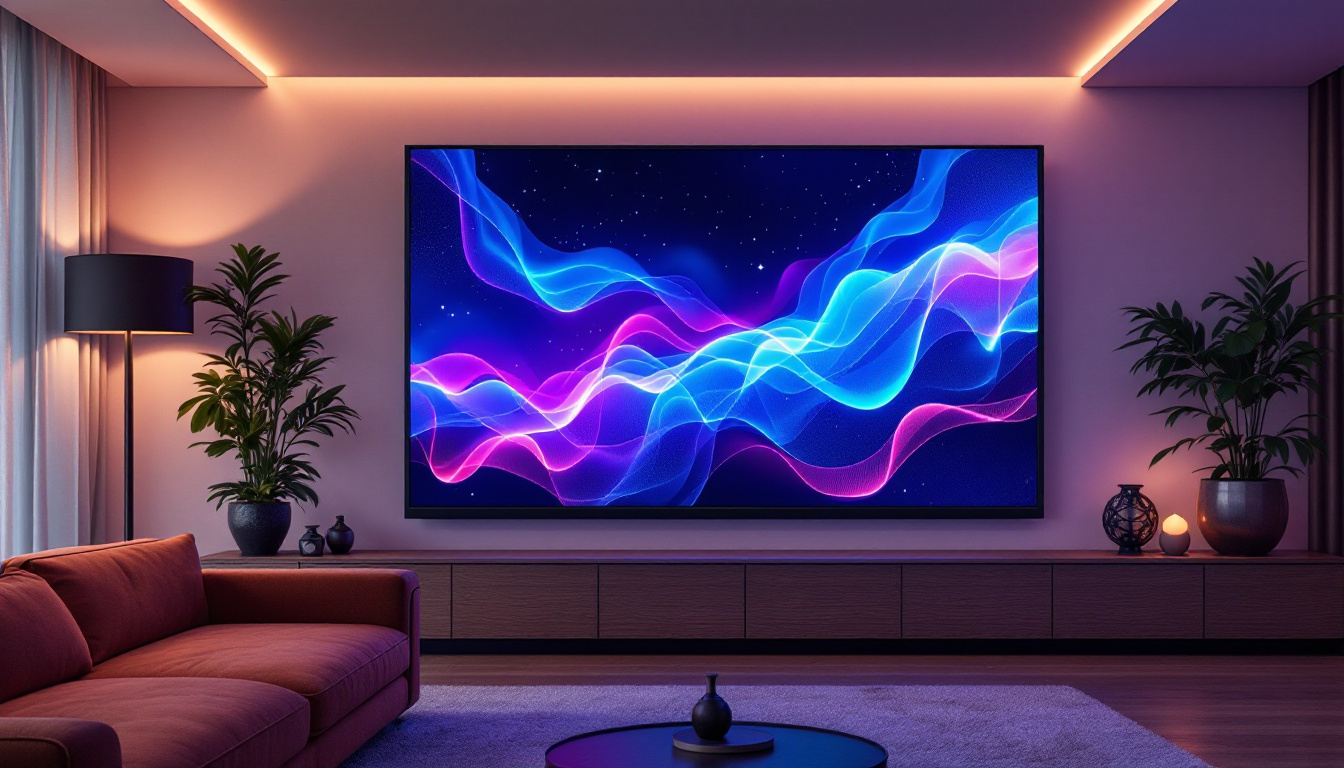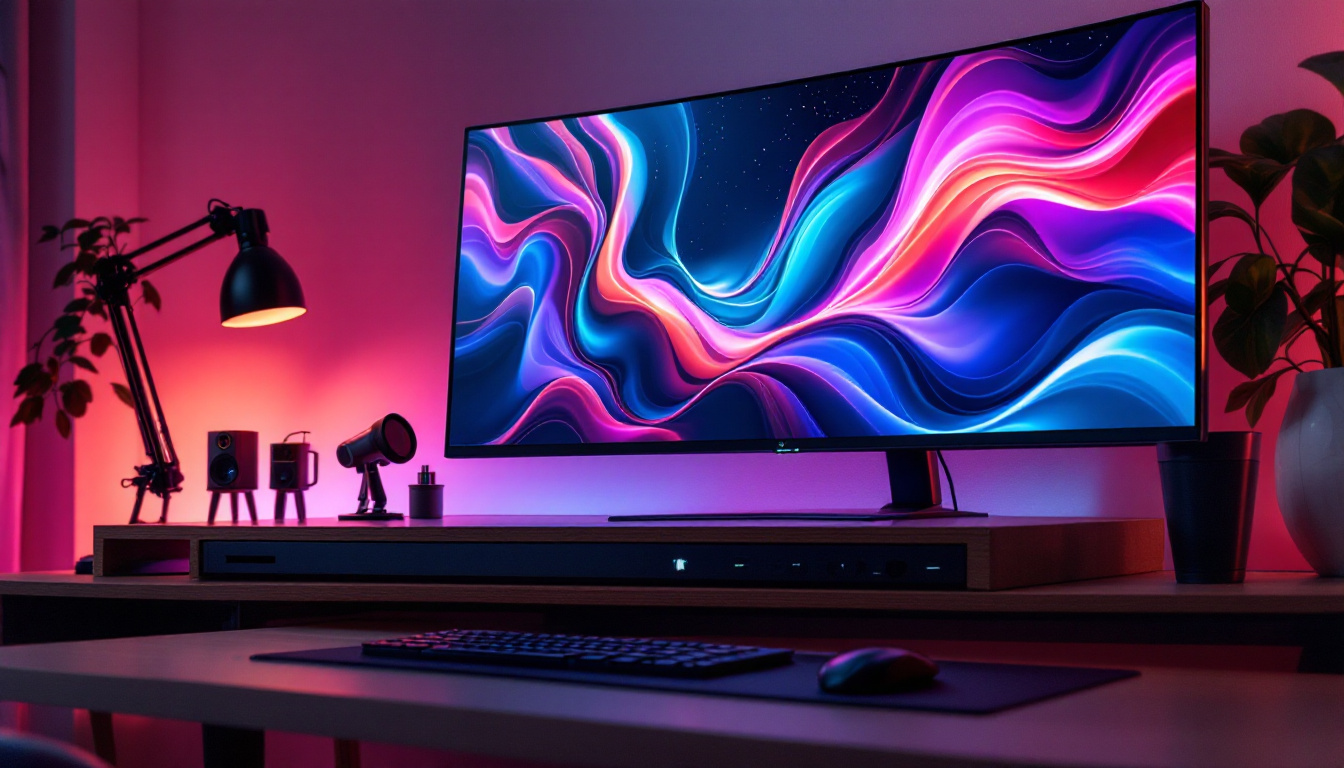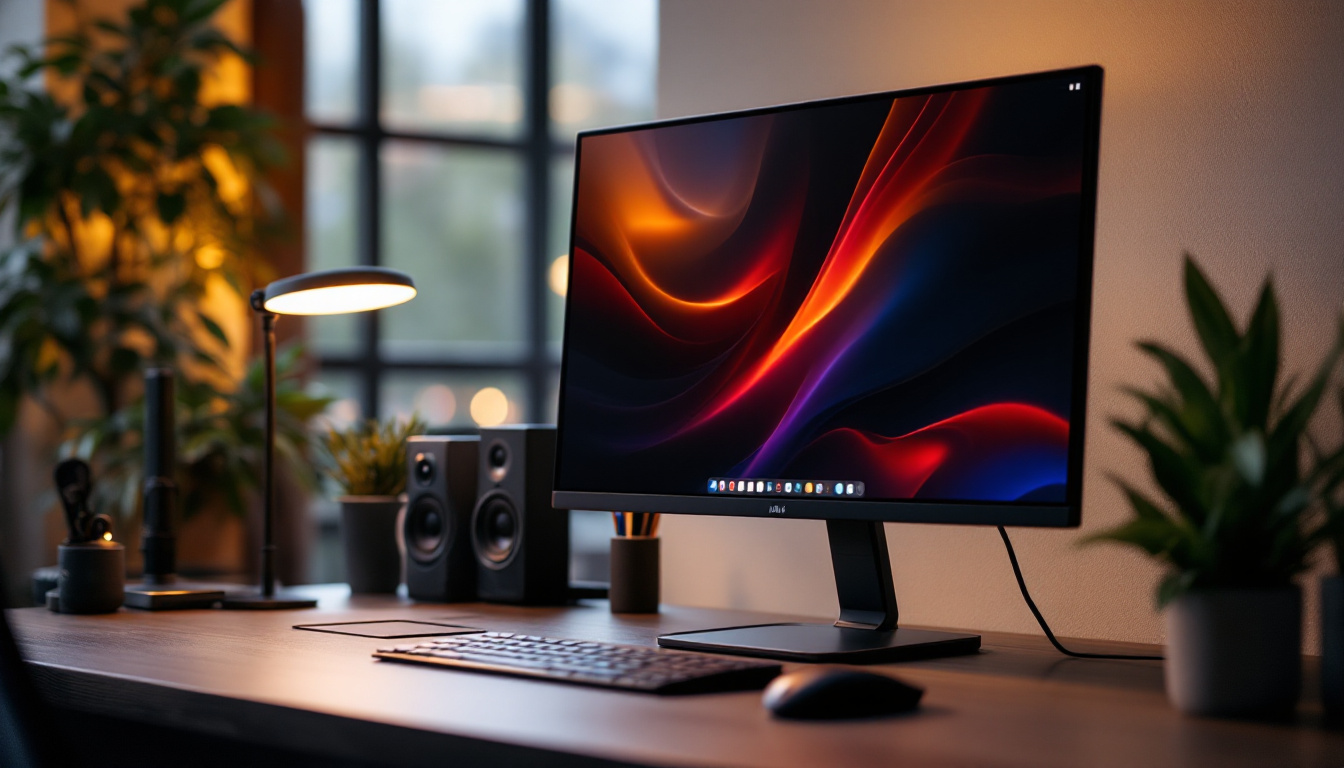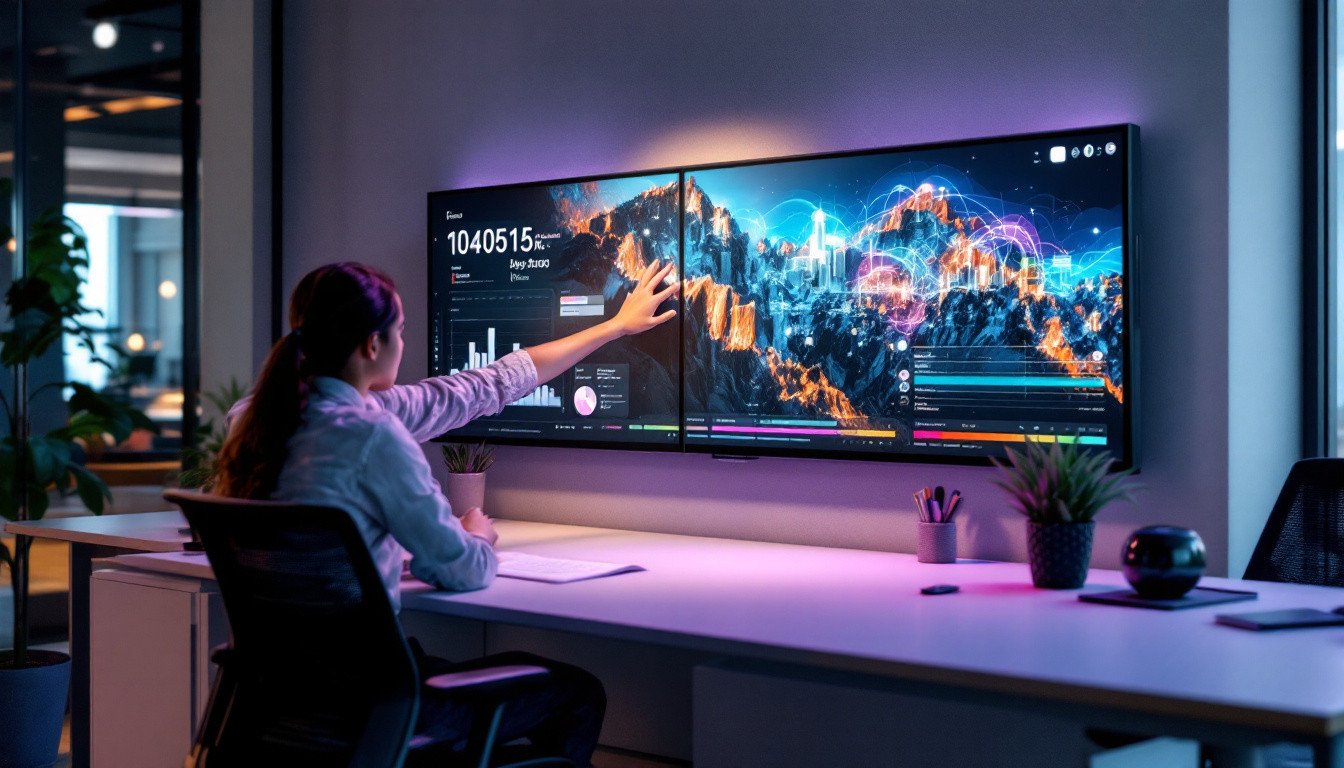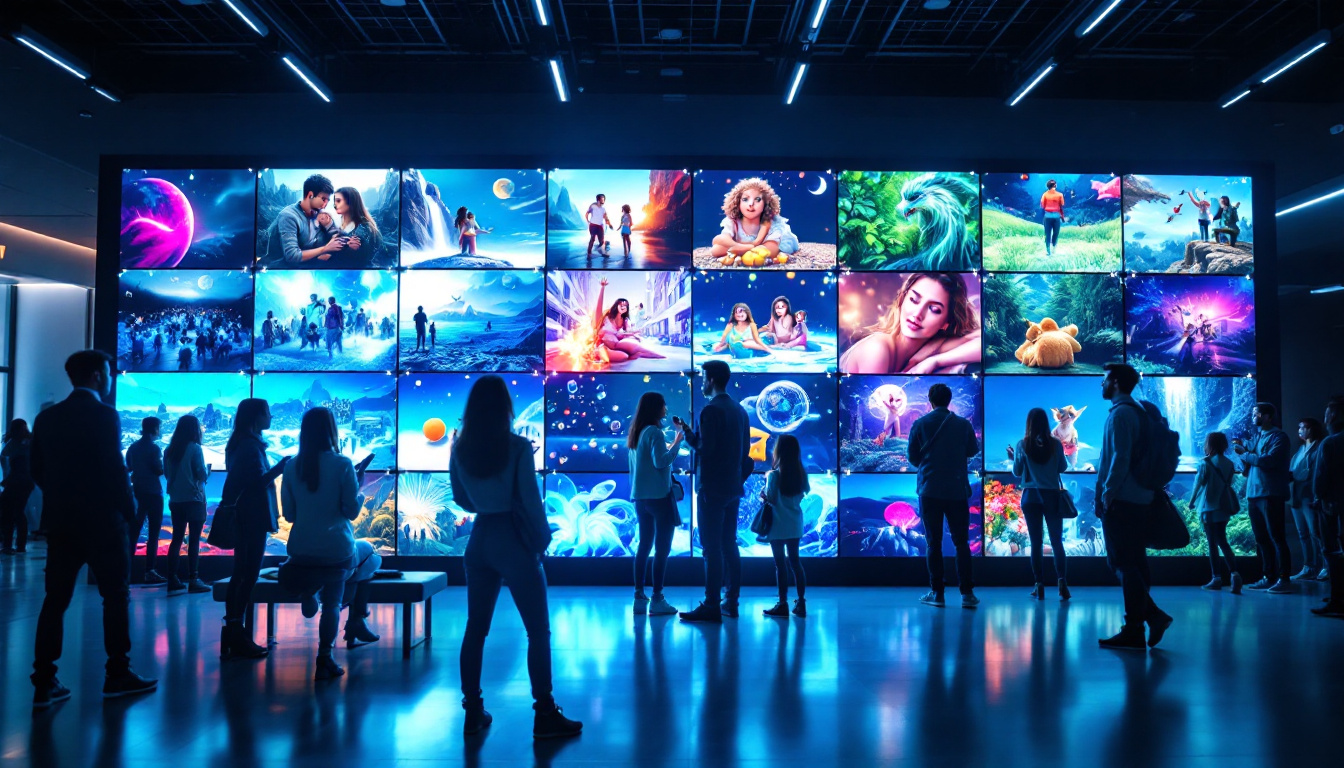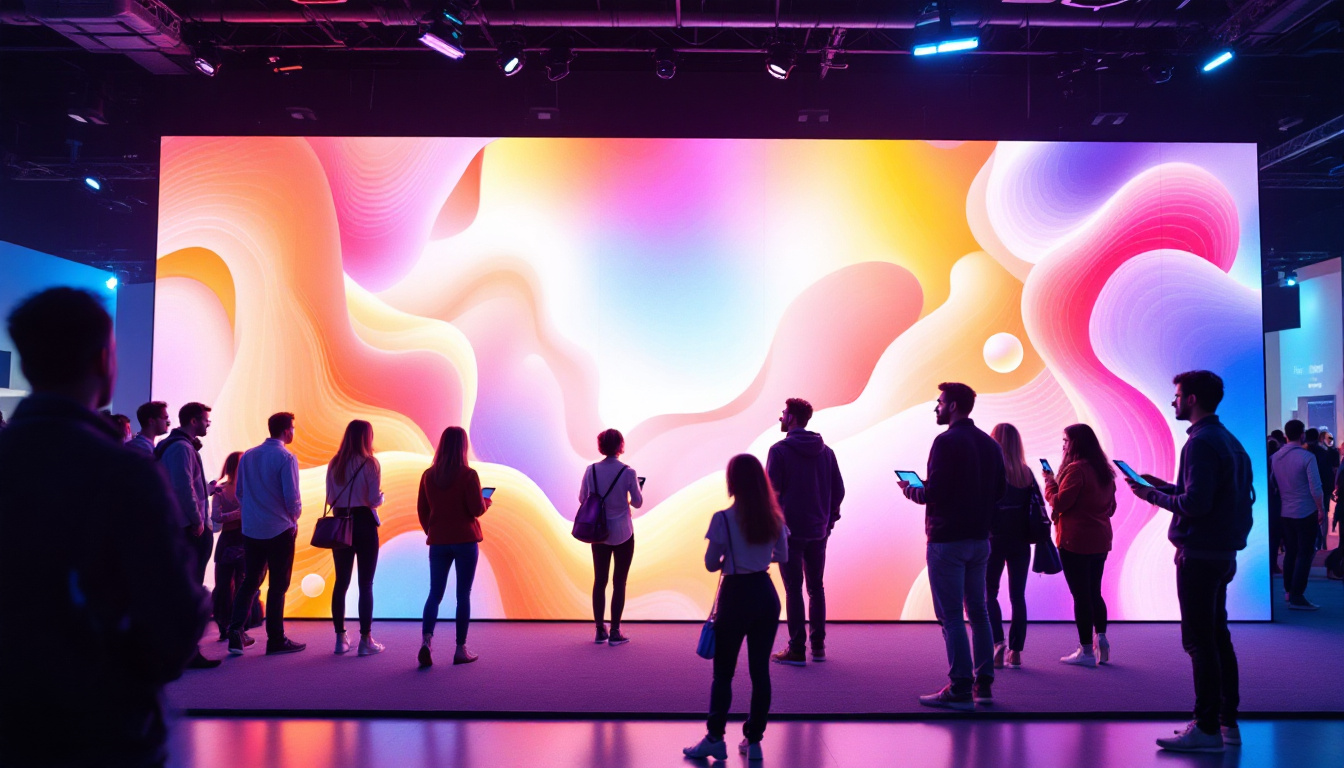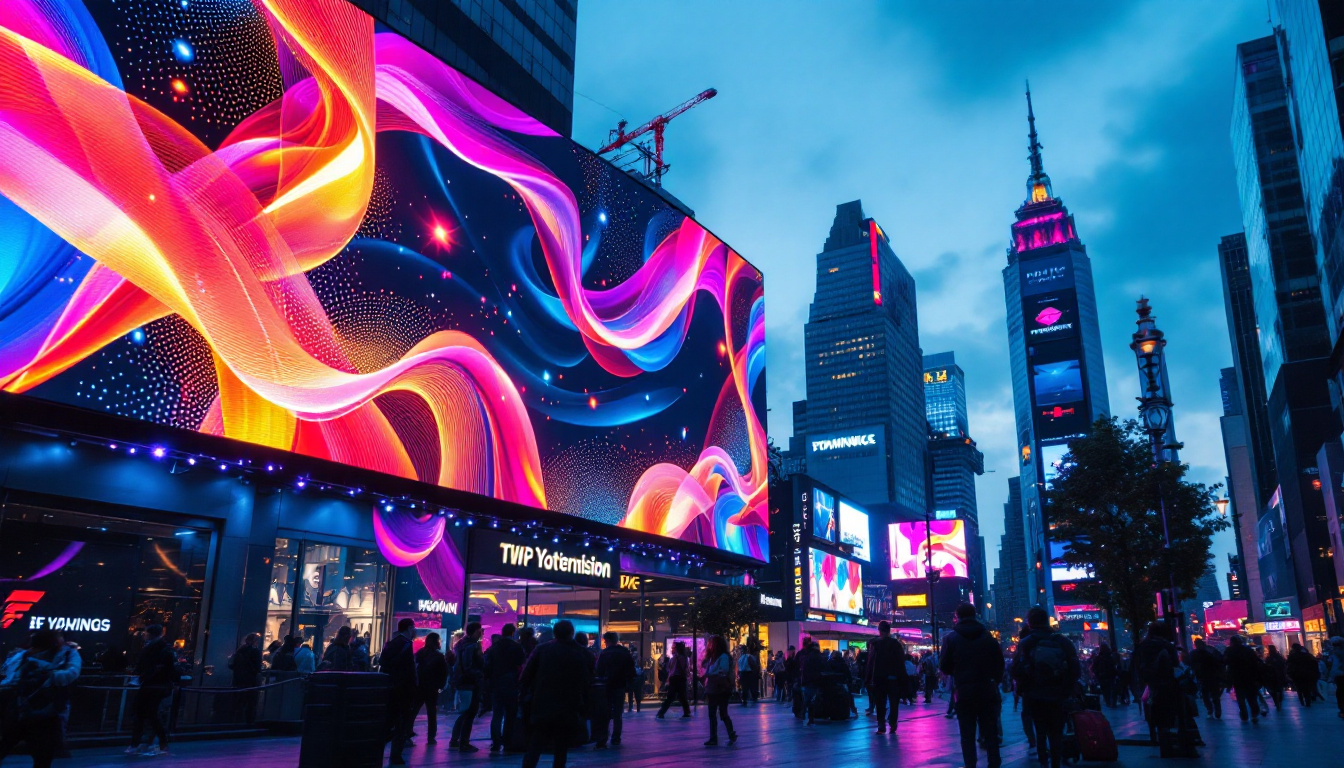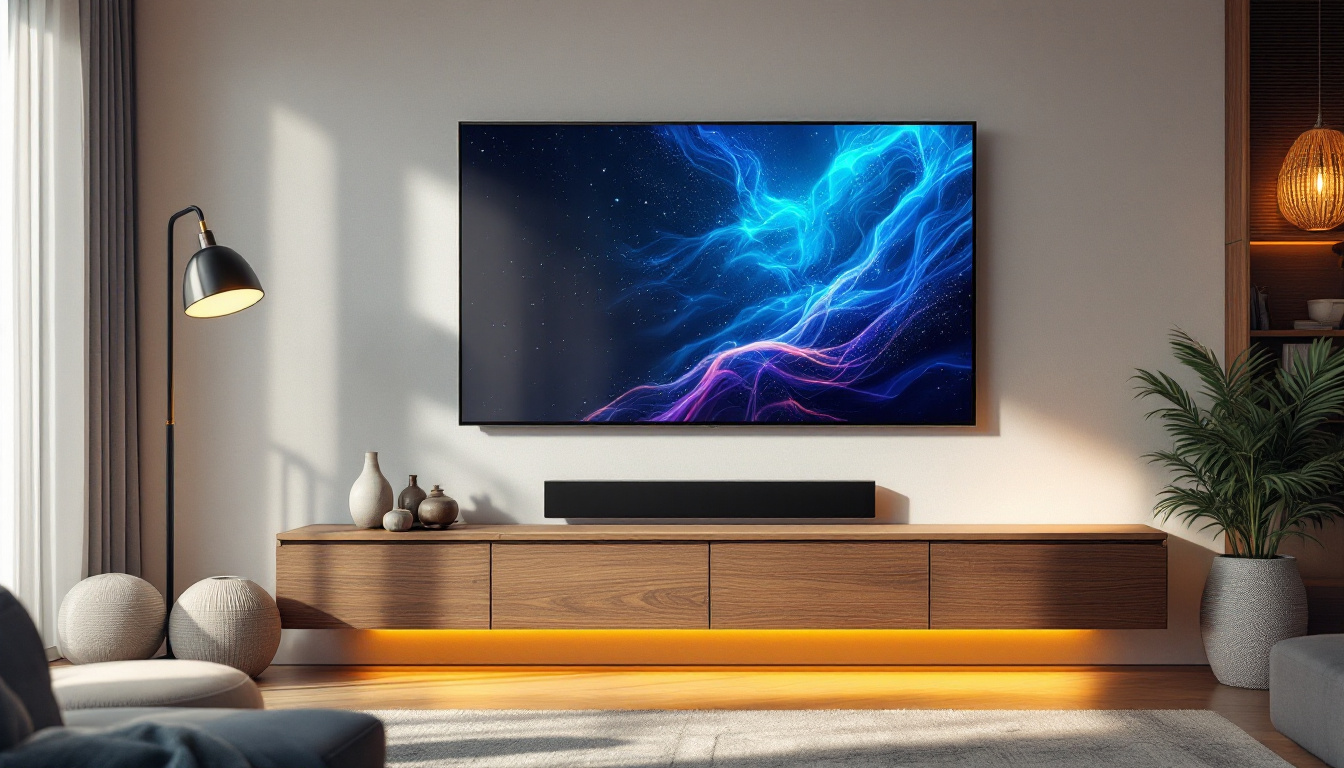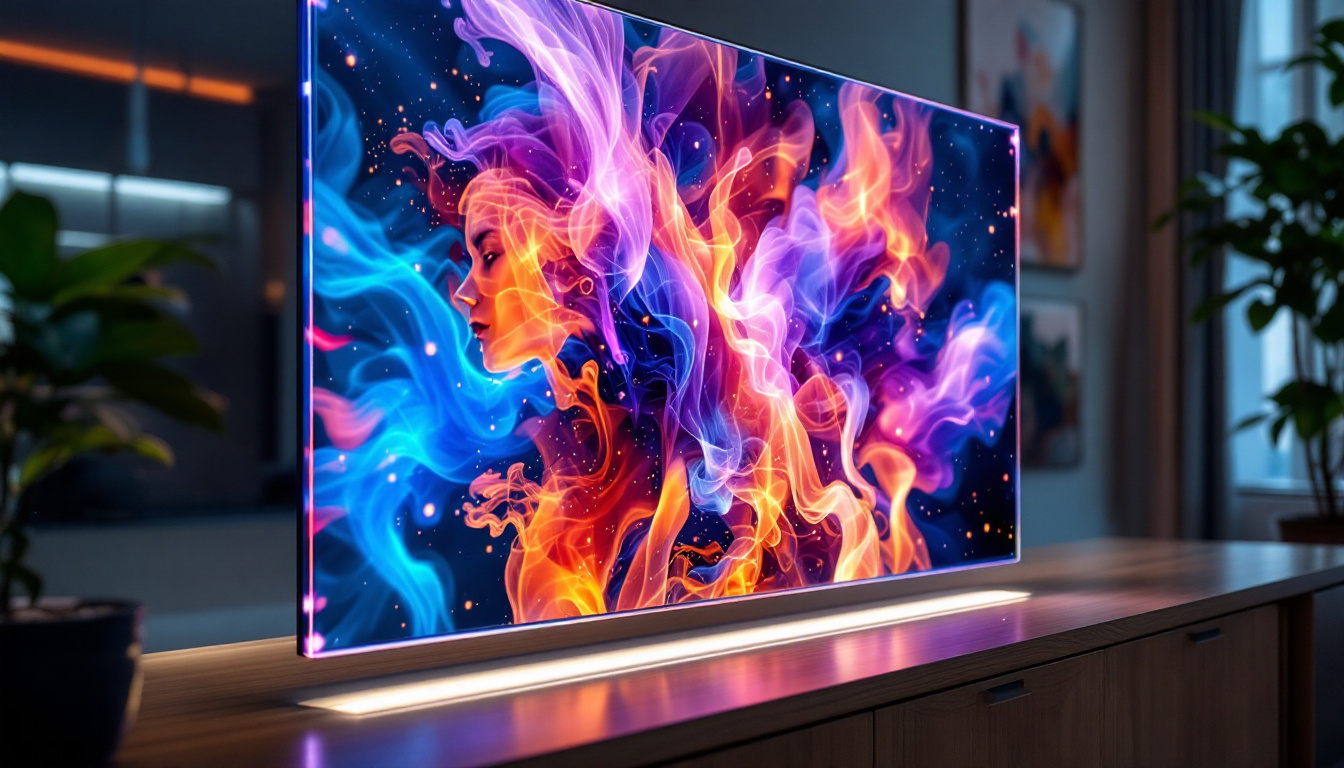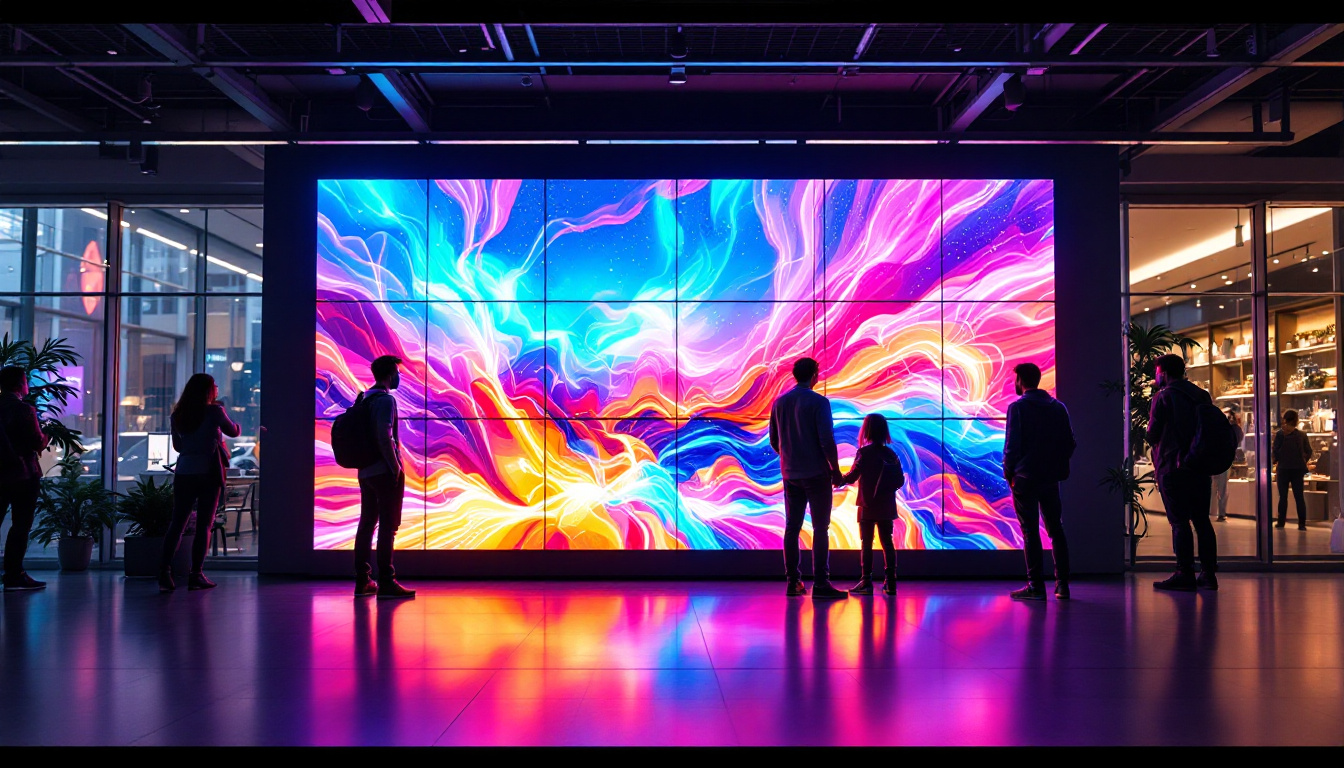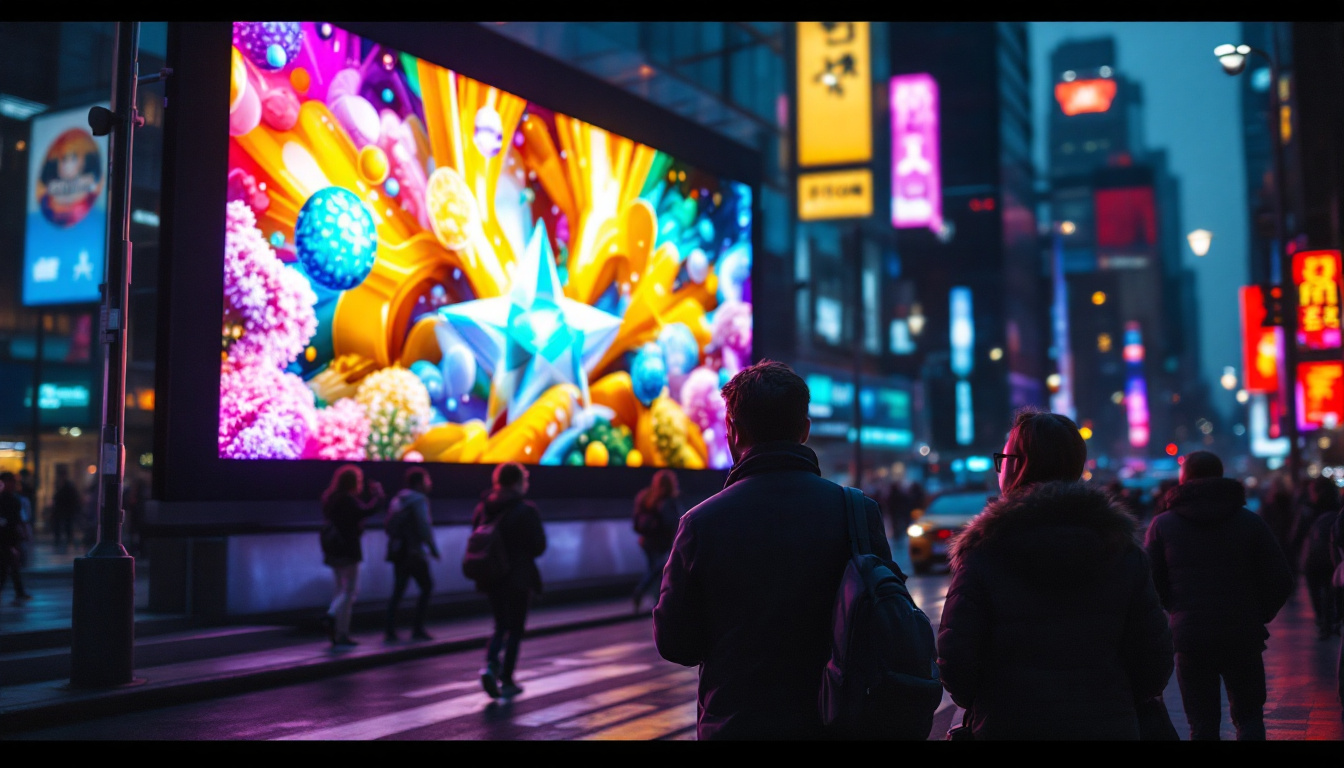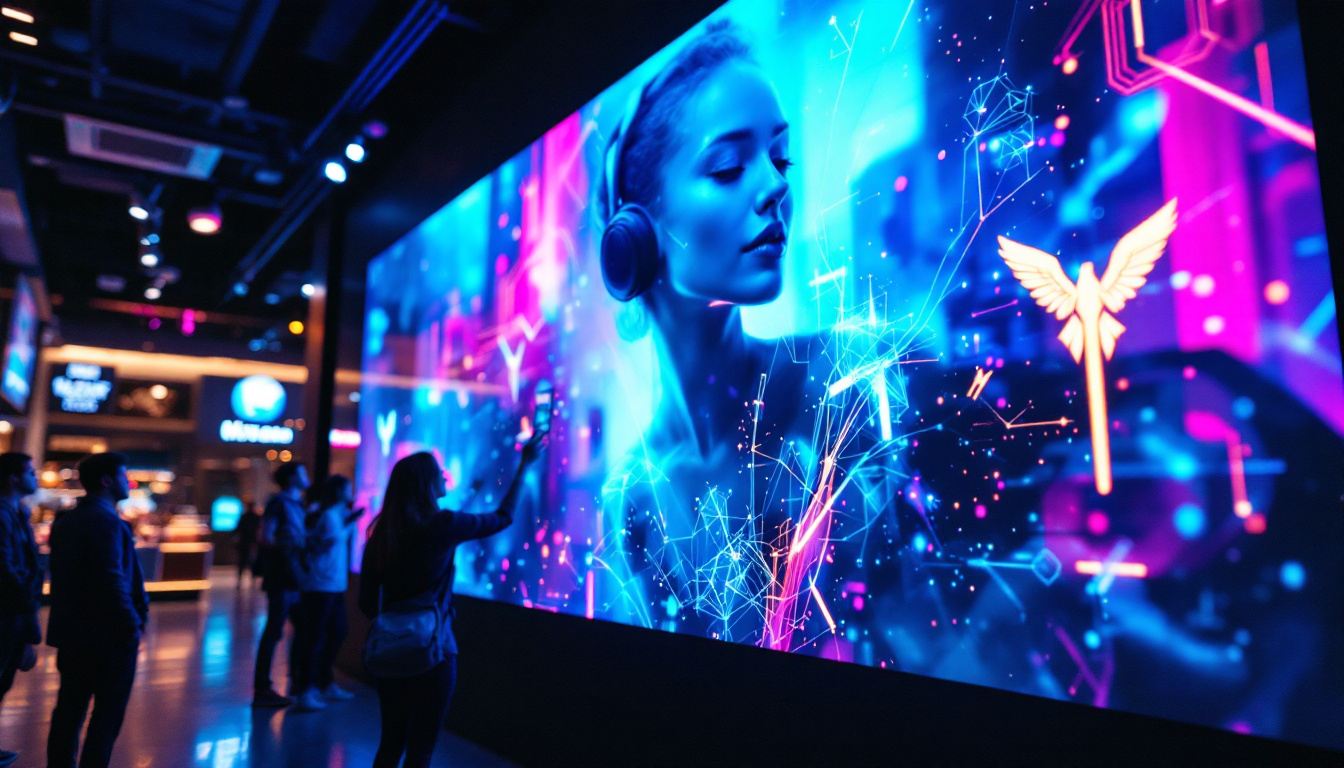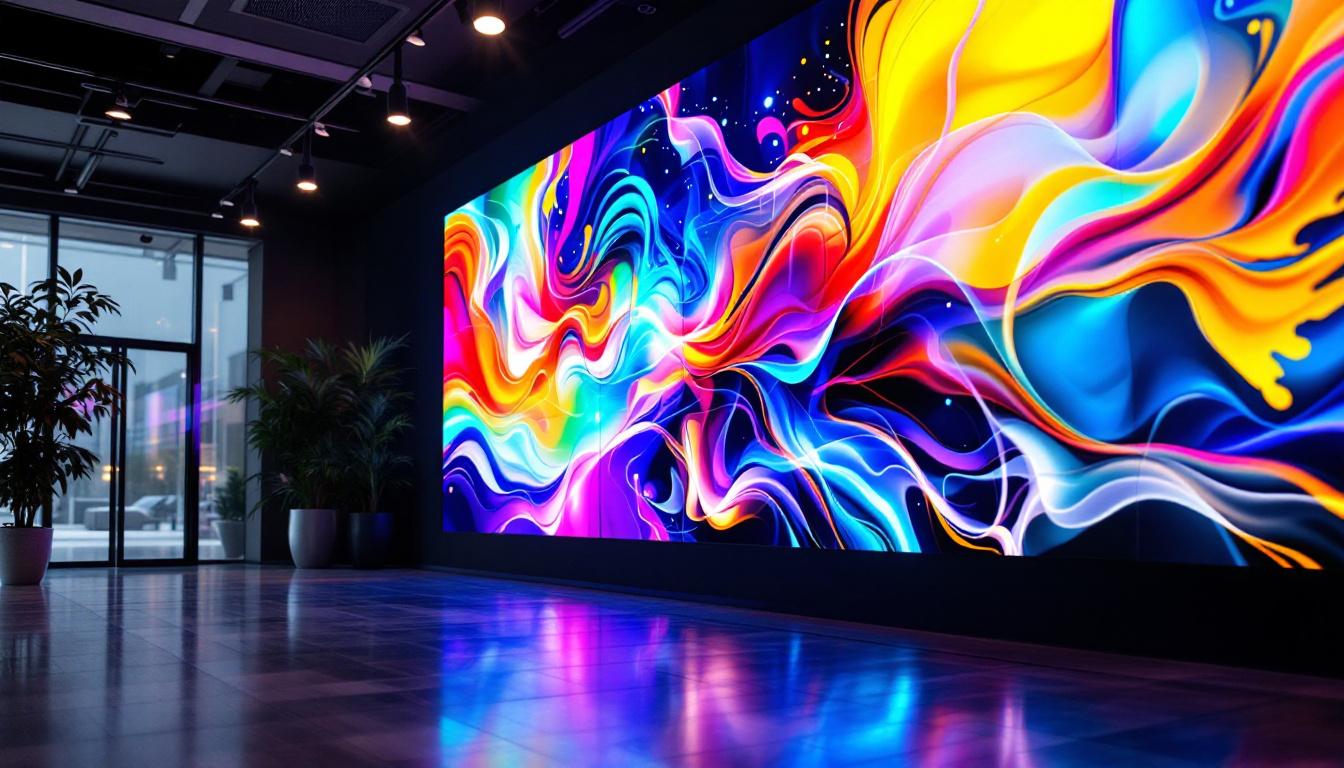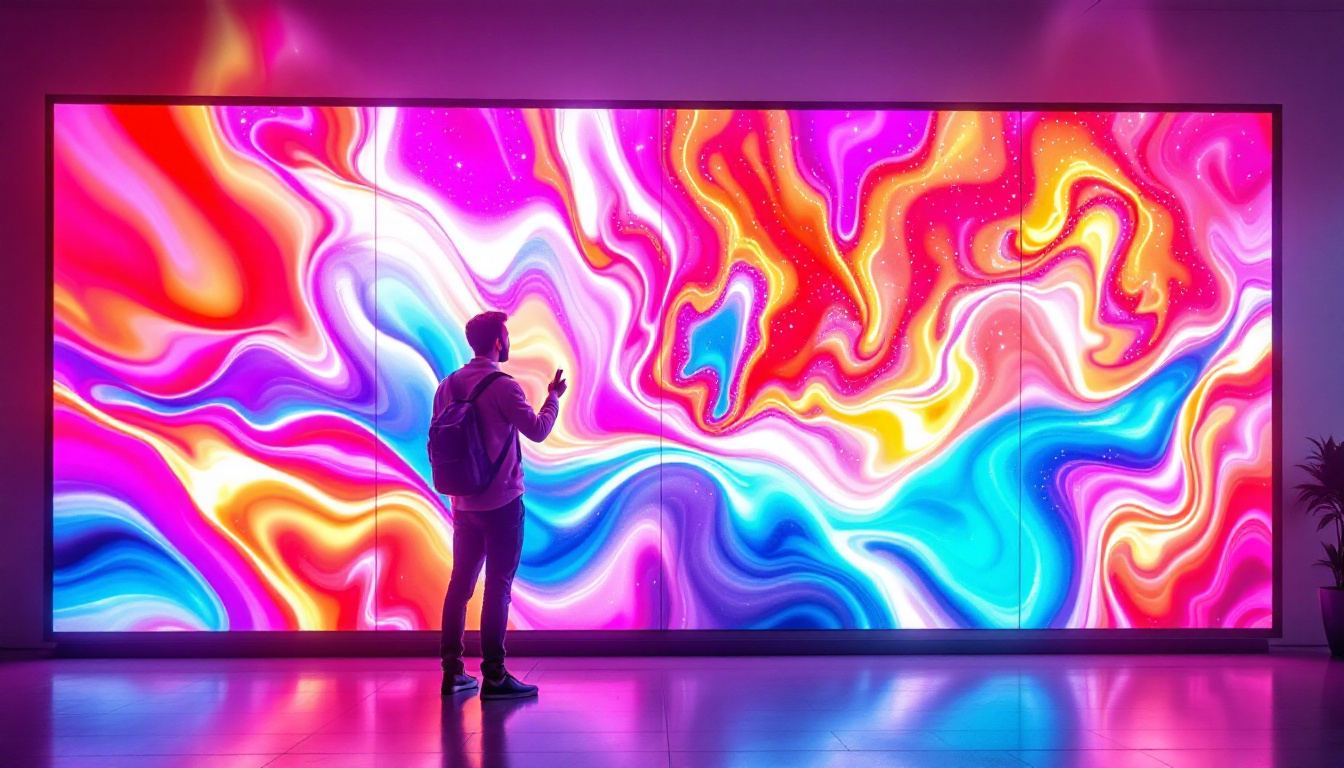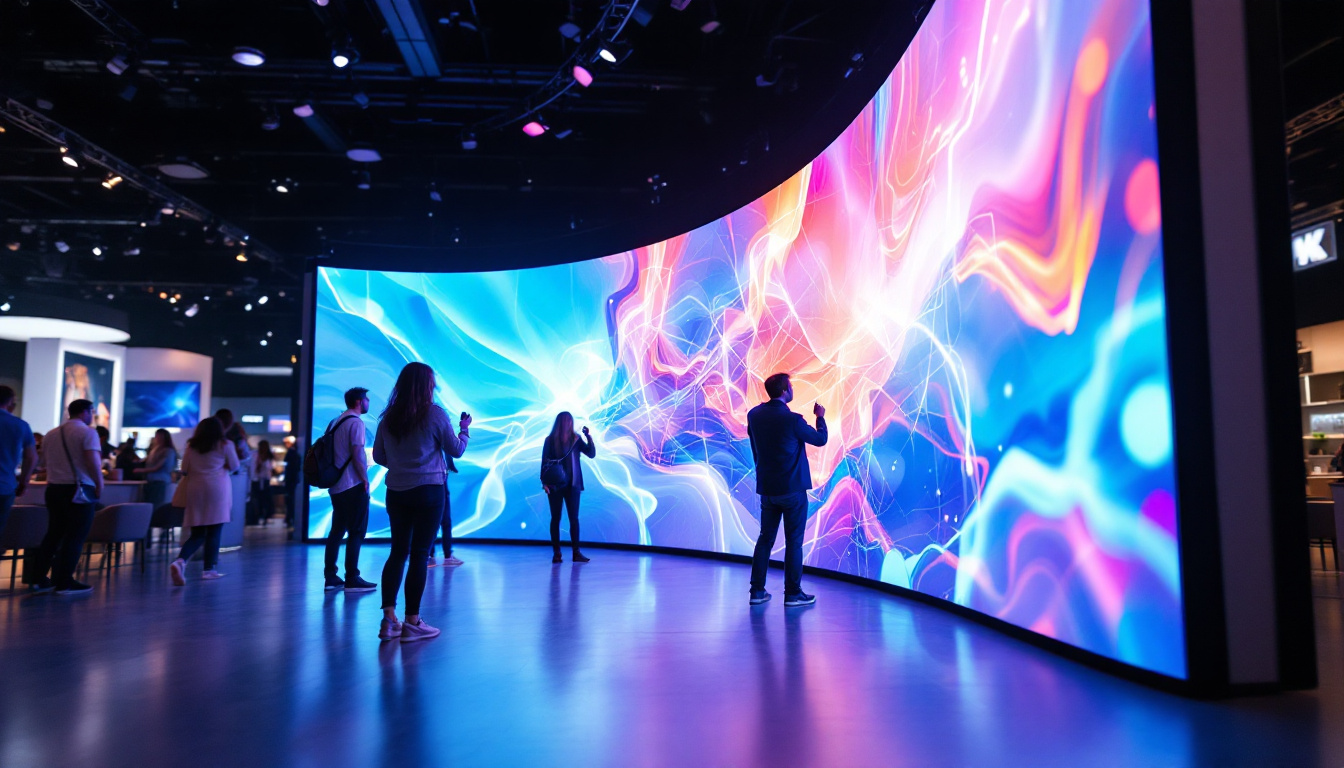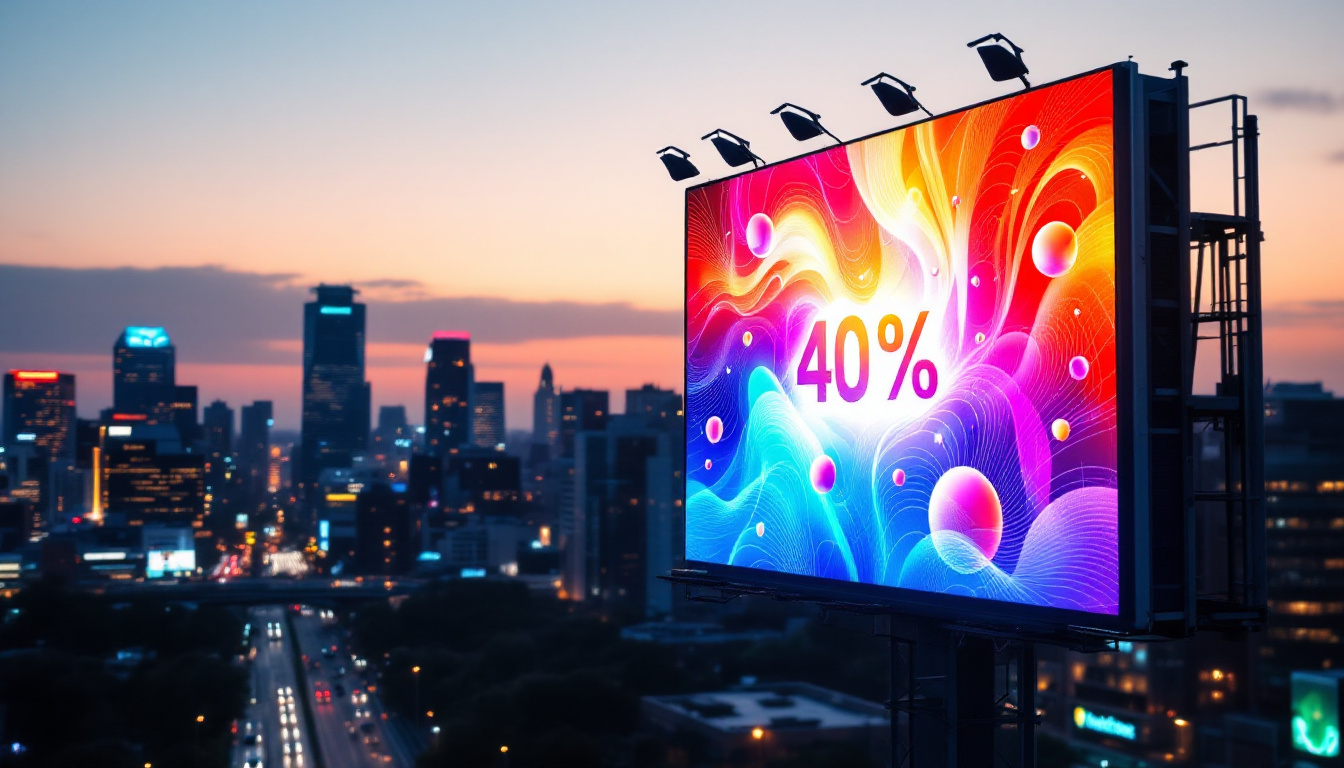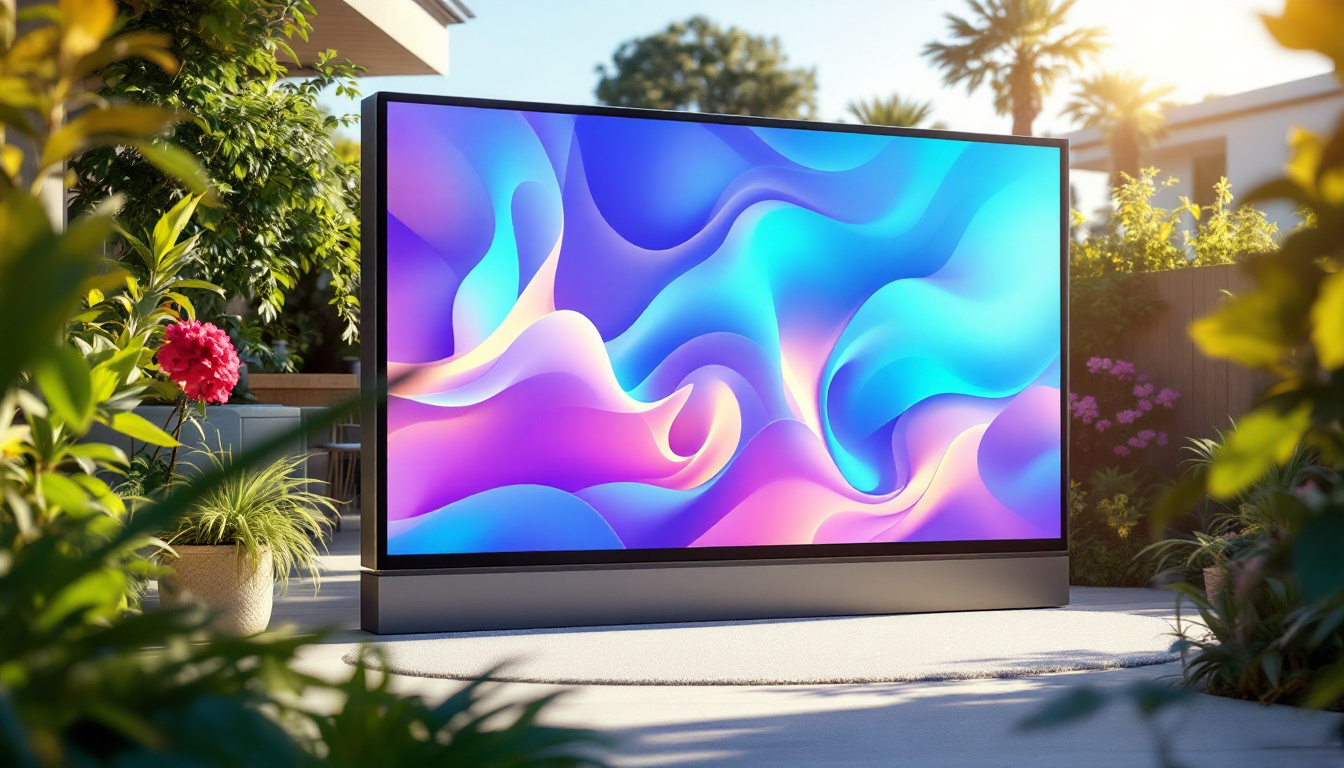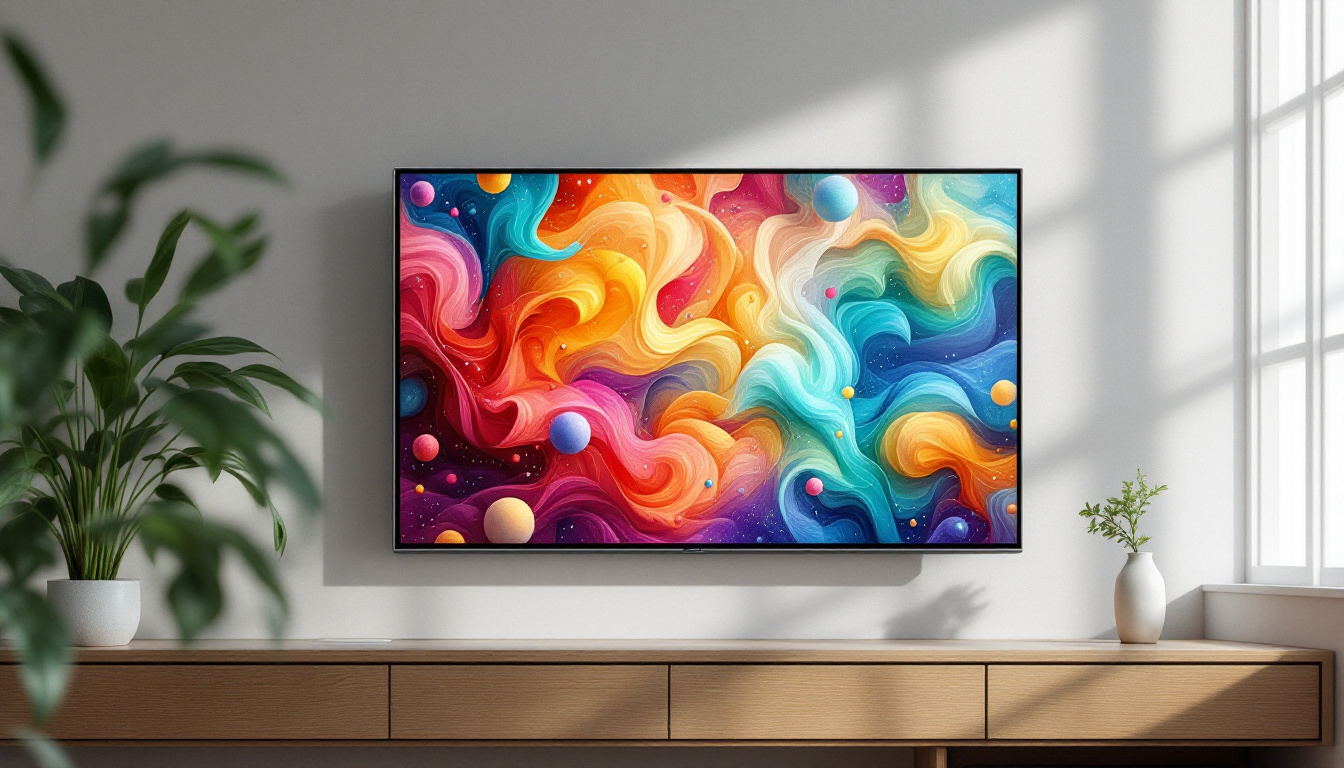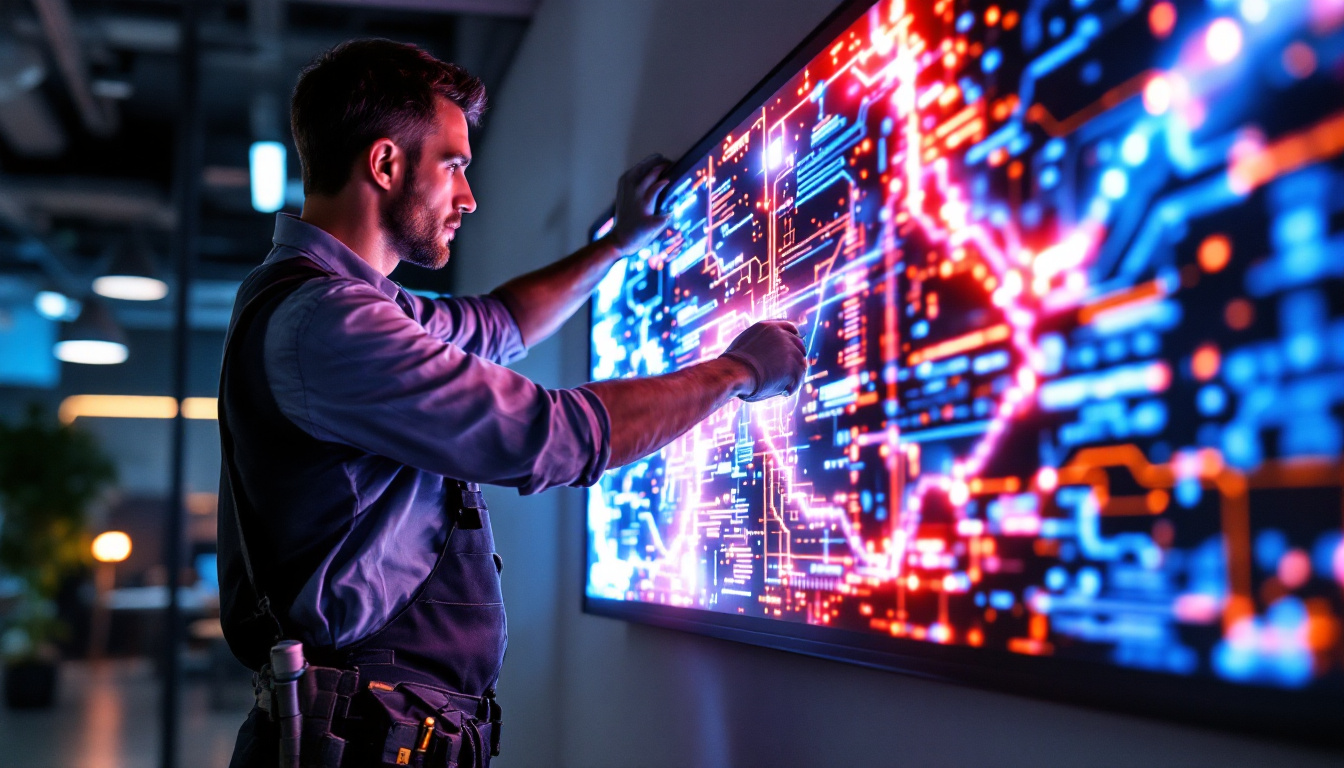Wall TV Design: LED Display Explained
In the realm of modern home entertainment, wall-mounted televisions have transformed the way we experience media. With the advent of LED technology, these displays have become more than just screens; they are integral components of home decor. This article delves into the intricacies of LED display technology, exploring its benefits, design considerations, and the future of wall TV designs.
Understanding LED Technology
LED, or Light Emitting Diode, technology has revolutionized the television industry. Unlike traditional LCD screens that use fluorescent backlighting, LED displays utilize an array of tiny diodes to produce light. This advancement not only enhances picture quality but also contributes to energy efficiency. The compact nature of LEDs allows for more flexibility in design, enabling manufacturers to create thinner and lighter televisions that can fit seamlessly into any living space.
The Basics of LED Displays
At the core of LED technology is the ability to produce brighter images with better contrast. This is achieved through two primary types of LED displays: edge-lit and backlit. Edge-lit displays have LEDs positioned around the perimeter of the screen, while backlit displays feature a grid of LEDs behind the screen. The latter typically offers superior brightness and color accuracy. Additionally, some modern LED TVs utilize local dimming technology, which allows certain areas of the screen to dim while others remain bright, further enhancing the contrast and depth of the images displayed.
Moreover, LED displays can achieve deeper blacks and more vibrant colors, thanks to their ability to turn off individual pixels. This feature is particularly beneficial in dark scenes, where traditional displays may struggle to maintain clarity. The precision of LED technology also allows for a wider color gamut, meaning viewers can enjoy a more extensive range of colors that are closer to what the human eye perceives in real life. This capability is especially noticeable in nature documentaries and films with rich visual storytelling.
Benefits of LED Displays
One of the most significant advantages of LED displays is their energy efficiency. Compared to older technologies, such as plasma or traditional LCD, LED TVs consume less power, making them a more environmentally friendly option. This efficiency translates to lower electricity bills, which is a welcome benefit for many households. Furthermore, the longevity of LED technology means that these displays often have a longer lifespan than their predecessors, reducing the need for frequent replacements and contributing to less electronic waste.
Additionally, LED displays are generally thinner and lighter than their predecessors. This slim profile allows for a seamless integration into wall designs, creating a sleek and modern aesthetic. The ability to mount these TVs flush against the wall enhances the overall look of a room, making it feel more spacious and contemporary. Many consumers also appreciate the versatility of LED displays, which can be easily paired with various mounting options, including swivel mounts and articulating arms, allowing for optimal viewing angles in any setup.
Picture Quality and Performance
When it comes to picture quality, LED displays excel in delivering sharp, clear images. The high refresh rates and low response times contribute to a smooth viewing experience, particularly for fast-paced content such as sports or action films. Furthermore, advancements in technology have led to the development of HDR (High Dynamic Range), which enhances the range of colors and contrast in images, providing a more lifelike viewing experience. This technology allows for brighter highlights and darker shadows, creating a more dynamic and immersive visual experience that captivates viewers.
In essence, LED technology not only improves the visual appeal of television content but also enhances the overall entertainment experience, making it a popular choice among consumers. The integration of smart technology into many LED models further enriches this experience, allowing users to access streaming services, browse the internet, and connect with other smart devices seamlessly. As LED technology continues to evolve, it promises to bring even more innovations that will redefine how we consume visual media.
Design Considerations for Wall-Mounted TVs
Mounting a television on the wall is not merely a practical decision; it also involves careful consideration of design elements. The placement, size, and style of the TV can significantly impact the overall ambiance of a room.
Choosing the Right Size
One of the first steps in designing a wall-mounted TV setup is selecting the appropriate size. A common guideline is to choose a screen size that corresponds to the distance from the seating area. For instance, a 55-inch TV is typically suitable for a viewing distance of about 7 feet. However, personal preference and room layout also play crucial roles in this decision.
It’s essential to strike a balance between a screen that is large enough to provide an immersive experience and one that does not overwhelm the space. Additionally, considering the dimensions of the wall where the TV will be mounted can help in making an informed choice.
Optimal Placement and Height
The height at which a TV is mounted can greatly affect the viewing experience. Ideally, the center of the screen should be at eye level when seated. This positioning minimizes neck strain and enhances comfort during prolonged viewing sessions. For most living rooms, this height is typically between 42 to 48 inches from the floor.
Moreover, the placement should consider factors such as glare from windows and light sources. Positioning the TV away from direct sunlight can prevent reflections that may hinder visibility. Additionally, incorporating adjustable mounts can allow for tilting or swiveling the TV to achieve the best viewing angle.
Integrating with Room Aesthetics
When designing a wall-mounted TV setup, it’s crucial to consider the overall aesthetics of the room. The TV should complement the existing decor rather than clash with it. This can be achieved by selecting a mount that blends in with the wall color or by incorporating a media console that matches the room’s style.
Furthermore, utilizing wall art or decorative elements around the TV can create a cohesive look. Custom cabinetry or shelving can also provide a stylish way to house media devices and accessories, keeping the area organized and visually appealing.
Innovative Wall TV Designs
As technology advances, so do the design possibilities for wall-mounted TVs. Innovative solutions are emerging that not only enhance functionality but also elevate the aesthetic appeal of living spaces.
Frame TV and Art Mode
One of the most exciting developments in wall TV design is the introduction of “Frame TVs.” These televisions are designed to resemble art pieces when not in use. With customizable frames and the ability to display artwork or personal photos, they seamlessly blend into the decor, transforming the TV into a focal point of the room.
In “Art Mode,” these TVs can showcase a variety of artworks, providing a gallery-like experience. This feature allows homeowners to personalize their space while maintaining the functionality of a traditional television.
Motorized TV Lifts
For those seeking a more dynamic solution, motorized TV lifts offer an innovative way to conceal the television when not in use. These systems allow the TV to be hidden within furniture, such as cabinets or even beds, and can be raised or lowered at the touch of a button.
This design not only saves space but also adds an element of surprise and sophistication to the room. It is particularly advantageous in multipurpose spaces where the TV may not always be the focal point.
Smart Integration and Connectivity
Modern wall-mounted TVs are increasingly becoming smart devices, equipped with internet connectivity and built-in streaming capabilities. This integration allows users to access a plethora of content without the need for additional devices, streamlining the entertainment experience.
Moreover, voice control and smart home integration enable users to operate their TVs seamlessly with other smart devices. This connectivity not only enhances convenience but also contributes to a more cohesive and modern living environment.
Future Trends in Wall TV Design
The future of wall TV design is poised for exciting developments as technology continues to evolve. Emerging trends indicate a shift towards even more integrated and aesthetically pleasing solutions.
Transparent Displays
One of the most intriguing advancements on the horizon is the development of transparent displays. These TVs can blend into their surroundings when not in use, offering a futuristic and minimalist aesthetic. Imagine a living room where the TV appears to vanish into the wall, only to become a vibrant display when activated.
This technology not only enhances the visual appeal of a room but also opens up new possibilities for interior design. Transparent displays could redefine how televisions are integrated into living spaces, making them less obtrusive and more harmonious with the overall decor.
Flexible Screens
Flexible screen technology is another area of innovation that holds promise for wall TV designs. These screens can be bent or rolled, allowing for creative installations that were previously unimaginable. For instance, a flexible display could be mounted on a curved wall or even used to create a unique shape that complements the room’s architecture.
As this technology matures, it may lead to entirely new ways of experiencing television, providing users with customizable viewing options that fit their individual needs and preferences.
Enhanced Interactivity
The future of wall TVs is also likely to include enhanced interactivity. With advancements in augmented reality (AR) and virtual reality (VR), televisions may evolve into immersive experiences that extend beyond traditional viewing. Imagine a wall-mounted display that allows users to interact with content in real-time, transforming passive viewing into an engaging experience.
This interactivity could revolutionize how families and friends enjoy movies, games, and educational content, fostering a more connected and entertaining environment.
Conclusion
Wall-mounted TVs have come a long way since their inception, evolving into sophisticated devices that enhance both entertainment and home design. With the advancements in LED technology, design considerations, and innovative solutions, these displays have become integral to modern living spaces.
As technology continues to progress, the future of wall TV design promises even more exciting developments. From transparent displays to flexible screens and enhanced interactivity, the possibilities are endless. Embracing these trends can elevate the home entertainment experience, making it not just about watching television, but about creating a dynamic and engaging environment.
Ultimately, the key to a successful wall TV design lies in balancing functionality with aesthetics, ensuring that the television enhances the space while providing an exceptional viewing experience. As consumers become more discerning, the demand for beautifully designed, high-performance wall-mounted TVs will only continue to grow.
Discover the Future of Wall TV Design with LumenMatrix
Ready to elevate your space with the latest in LED display technology? LumenMatrix is at the forefront of innovation, offering a wide array of LED display solutions that transform any environment. Whether you’re interested in Indoor LED Wall Displays for your home theater, Outdoor LED Wall Displays for impactful advertising, or even Custom LED Displays tailored to your unique needs, LumenMatrix has the expertise to bring your vision to life. Experience the revolution in visual communication and check out LumenMatrix LED Display Solutions today to create an engaging and dynamic environment that goes beyond traditional viewing.

